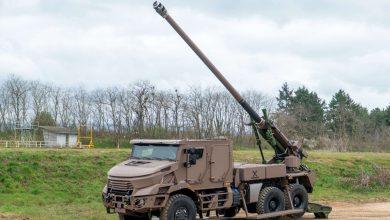Esterline Lands Game-Changing Deal to Upgrade Thales Hawkei Fleet Down Under
Esterline Corporation has recently concluded a contract with Thales Australia on the 12th of September. Under this agreement, Esterline will supply Thales with robust displays and servers designed for integration into the Hawkei Protected Mobility vehicles. This contract was awarded following a global tender process, acknowledging Esterline’s industry leadership, unique system architecture, and, crucially, its successful testing outcomes.
Thales chose Esterline’s durable networked products for the vehicles after a thorough assessment process, which included extensive testing and technical information exchange sessions with the Esterline team.
“For Esterline, this contract confirms that we have the solutions essential to equip next-generation protected vehicles built on the Generic Vehicle Architecture,” remarked Steven Luys, Vice President of Rugged and ATC, Esterline Advanced Displays. He added: “We are eager to provide the displays and servers that will enhance situational awareness in this esteemed next-generation vehicle.”







